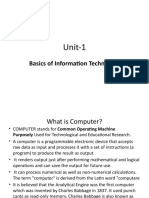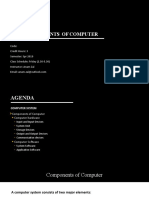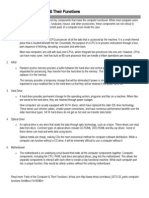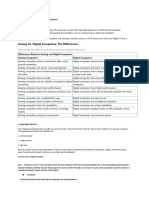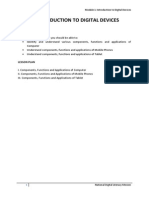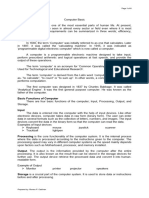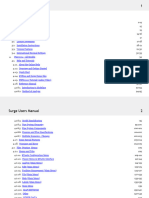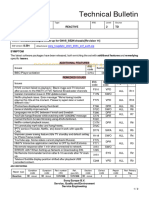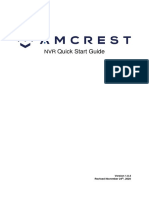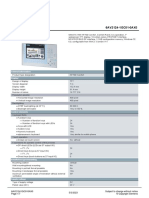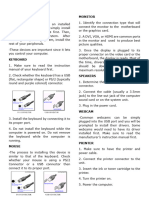Computer Studies Notes Std.
3
2024-2025
1. Computer System
Hardware:
The physical parts of the computer that you can see or touch are called hardware. Some
of the hardware components are as follows:
Monitor:
A monitor looks like a television. It is an output device that displays the final results. A
monitor is also known as a Visual Display Unit (VDU). The information that can be seen
on the monitor is called the softcopy. There are three types of monitors:
1. Cathode Ray Tube (CRT): CRT monitors are big in size and consume more
power.
2. Liquid Crystal Display (LCD): A LCD has a flat screen and consumes less power
as compared to CRT.
3. Light Emitting Diode (LED): LED monitor is thinner and lighter in weight than
CRT’s. They use 40% less power than LCD’s and last longer.
Central processing unit (CPU):
CPU is a processing device. It is also known as the brain of a computer. It processes all
the data and instructions given to the computer. CPU has three components:
1. Memory unit (MU): This unit stores the data and instructions that are to be
processed.
2. Control unit (CU): This unit controls and manages the working of all the parts of a
computer.
3. Arithmetic and logic unit (ALU): This unit performs all the calculations like
addition, subtraction, multiplication and division.
Keyboard: It is an input device that is used to type data and instructions into the
computer. The different types of keys on the keyboard are as follows:
1
� 1. Typing (alphanumeric keys): Theys keys include letters (alphabet keys), number
keys, punctuation marks and special symbols (+, -, &, ; etc).
2. Combination keys: These keys are used in combination with the other keys to
perform certain actions. Examples are Shift, Ctrl, Alt and windows keys.
3. Function keys: These are used to perform specific tasks. They have different
functions on different programs and are labelled as F1 to F12.
4. Special keys: These keys are used to perform a specific task.
a. Esc: It is used to abort, cancel or close an operation.
b. Delete: It erases the character after the cursor or selected text.
5. Numeric keypad: It consists of the number keys from 0 to 9, arithmetic operators
and a decimal point. It looks like a calculator.
6. Navigation keys: These keys are used for moving through the documents.
a. Arrow keys: These keys are used to move the cursor on the screen.
b. Home: It moves the cursor to the beginning of the line.
c. End: It moves the cursor to the end of the line.
Mouse: A mouse is an input device also known as pointing device. It helps you to draw
pictures. It has two buttons and a scroll wheel.
Touchscreen: A touchscreen is a screen that is sensitive to touch. A touchscreen is an
input device as well as output device.
Scanner: It is an input device that scans the text or pictures printed on a paper and
translates the information in the digital form.
Light Pen: It is an input device that can be used on a special pad. Whatever you write on
this pad can be seen on a monitor.
Printer: It is an output device that prints the work that you see on the computer screen
on paper. A printed copy is called hard copy.
Plotter: Plotter is an output device used to print posters, maps etc.
Speakers: Speakers are output devices that are used to listen to music and sound stored
on a computer.
Hard disk: A hard disk is a storage device. It stores huge amount of data.
2
�CD/DVD/Blu – ray disc: CD stands for compact disc, DVD stands for digital versatile
disc or digital video disc and blu –ray disc are used to store high quality videos.
Pen drive: Pen drive is a portable device that is small in size and can store and transfer
data.
System software: It is a set of program that helps to run a computer’s hardware and
other programs.
Operating system: Examples are Windows, Mac OS and Linux.
Application software: It helps you to do specific type of work. Examples are Microsoft
word, Microsoft excel and paint.
Input – Process – Output cycle (IPO):
Input is the data or instructions entered in a computer. Process is the CPU works for the
data provided to give meaningful information and output is the final result.
Example:
Machine Calculator → Input: two numbers → Process: adding the numbers → Output:
Sum of two numbers.
***********************************************************************





